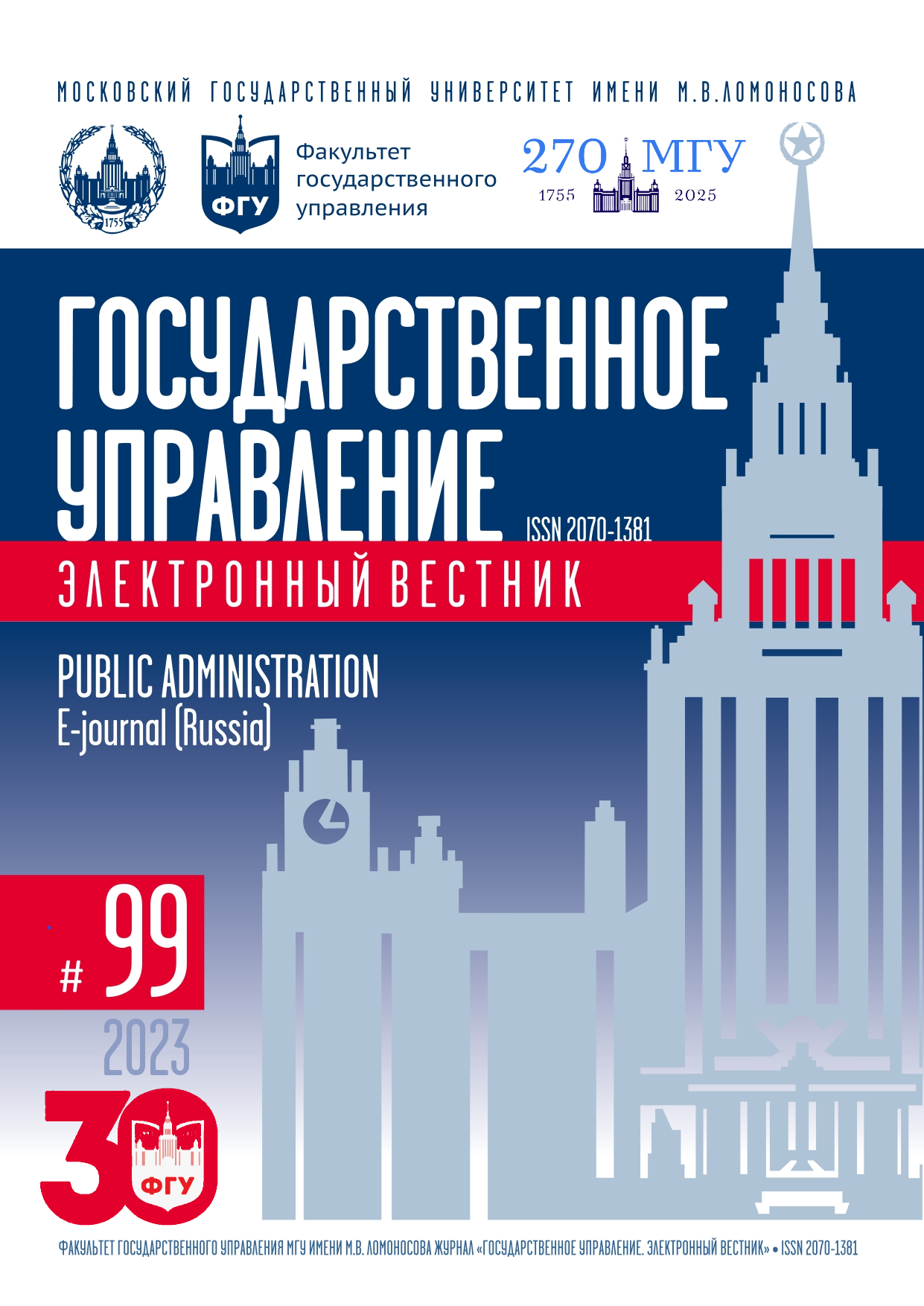Новая структура и функции государственного сектора России перед лицом глобальных вызовов
Ключевые слова:
государственный сектор, государственная собственность, государственные компании, приватизация, импортозамещениеАннотация
Перед лицом глобальных вызовов внимание к проблематике государственного сектора, вопросам его структуры и функций возрастает. Для успешной реализации стоящих перед ним задач необходимы качественные преобразования внутри госсектора, повышающие его гибкость и эффективность в рыночной экономике. Целью данной статьи является исследование динамики и современной структуры государственного сектора России, а также выявление направлений качественных преобразований и новых функций госсектора в период глобальной турбулентности. В работе представлен анализ обширных статистических данных за период с 2017 по 2023 гг., подтверждающих наличие как количественных, так и качественных изменений государственного сектора РФ. В ходе исследования выявлено, что за последние шесть лет госсектор в России сократился примерно на 47% по количеству коммерческих предприятий. При этом оптимизация структуры государственного сектора происходит за счет упразднения или продажи небольших предприятий, а также преобразования устаревших и неэффективных унитарных предприятий в современные рыночные формы акционерных обществ. Было также доказано, что государство сохраняет контроль над крупнейшими стратегическими активами и концентрирует властно-хозяйственные полномочия в рамках вертикально интегрируемых структур в целях обеспечения национальной и экономической безопасности. Сверхновые реалии привели к расширению функций государственного сектора, который, помимо своих основных обязанностей, приобрел дополнительные, такие как финансирование инноваций для импортозамещения; создание положительной практики перехода на российские решения в бизнесе; временное управление иностранными активами; развитие экономики совместного потребления, обеспечение технологического трансфера между отраслями; кооперация с флагманами российского бизнеса; сдерживание оттока ключевых кадров. Качественные преобразования государственного сектора, включая улучшение показателей финансово-экономической деятельности госкомпаний, избавление от неэффективных форм государственного предпринимательства, применение инновационных инструментов и бизнес-процессов, развитие новых механизмов государственно-частного партнерства, свидетельствуют о положительных сдвигах в направлении реализации стоящих перед ним задач.
Библиографические ссылки
Дементьев В.Е. Государственные корпорации и структурные сдвиги в экономике // Управление. 2016. № 3. С. 12–18. DOI: 10.12737/21291
Клейнер Г., Петросян Д., Беченов А. Еще раз о роли государства и государственного сектора в экономике // Вопросы экономики. 2004. № 4. С. 25–41. DOI: 10.32609/0042-8736-2004-4-25-41
Козлова С.В., Братченко С.А. Совершенствование системы управления государственной собственностью: уроки прошлого и направления развития // Российский экономический журнал. 2018. № 4. С. 56–68.
Кононкова Н.П., Михайленко Д.А. «Антикризисная» приватизация в контексте общемировых закономерностей развития государственной собственности // Российский экономический журнал. 2017. № 6. С. 39–53.
Кононкова Н.П., Михайленко Д.А. Государственная собственность как фактор минимизации рисков и неопределенности в экономике совместного потребления // Международная ежегодная научная конференция Ломоносовские чтения-2022. Секция экономических наук. «Наука и искусство экономической политики в кризисных условиях» Сборник лучших докладов. М.: Экономический
факультет МГУ имени М.В. Ломоносова. 2023. С. 174–179.
Радыгин А. Россия в 2000–2004 годах: на пути к государственному капитализму? // Вопросы экономики. 2004. № 4. С. 42–65. DOI: 10.32609/0042-8736-2004-4-42-65
Радыгин А.Д., Энтов Р.М., Абрамов А.Е., Аксенов И.В., Мальгинов Г.Н., Чернова М.И. «Большая неохотная приватизация»: противоречивые подходы в условиях санкций // Вопросы экономики. 2018. № 8. С. 5–38. DOI: 10.32609/0042-8736-2018-8-5-38
Цифровая трансформация экономики: государство, бизнес, общество: коллективная монография / под ред. Н.П. Кононковой. М.: ТЕИС, 2019.
Benoit S., Wang Y., Teng L., Hampson D., Li X. Innovation in the Sharing Economy: A Framework and Future Research Agenda // Journal of Business Research. 2022. Vol. 149. P. 207–216. DOI: 10.1016/j.jbusres.2022.05.020
Gorog G. The Definitions of Sharing Economy: A Systematic Literature Review // Management. 2018. Vol. 13. Is. 2. P. 175–189. DOI: 10.26493/1854-4231.13.175-189
Paik Y., Kang S., Seamans R. Entrepreneurship, Innovation and Political Competition: How the Public Sector Helps the Sharing Economy Create Value // Strategic Management Journal. 2019. Vol. 40. Is. 4. P. 503–532. DOI: 10.1002/smj.2937
Загрузки
Опубликован
Наиболее читаемые статьи этого автора (авторов)
- Кононкова Наталья Петровна, Костанян Ани Асканазовна, Михайленко Диана Александровна, Новиков Владимир Александрович, Волкова Елена Юрьевна, Ильин-Минкевич Владислав Игоревич, Роль государства в совершенствовании интернет-инфраструктуры в вузах для поддержки комбинированных форматов обучения , Государственное управление. Электронный вестник: № 92 (2022)
Похожие статьи
- Логвенков Илья Сергеевич, Было ли чем лечить? Антиинфляционный аспект шоковой терапии через призму концепции state capacity (1991–1992) , Государственное управление. Электронный вестник: № 110 (2025)
- Шкарина Вера Сергеевна, Особенности развития креативных индустрий в современной экономической политике , Государственное управление. Электронный вестник: № 94 (2022)
- Байнова Мария Сергеевна, Зворыгин Роман Викторович, Государственная поддержка социально ориентированных НКО в России в условиях глобальных вызовов: виды, эффективность, направления совершенствования , Государственное управление. Электронный вестник: № 110 (2025)
- Наумов Александр Олегович, Белоусова Марина Владимировна, Поиск «третьего пути» между государством и рынком: государственное предпринимательство в Италии в середине XIX–второй половине XX в. , Государственное управление. Электронный вестник: № 94 (2022)
- Кононкова Наталья Петровна, Костанян Ани Асканазовна, Михайленко Диана Александровна, Новиков Владимир Александрович, Волкова Елена Юрьевна, Ильин-Минкевич Владислав Игоревич, Роль государства в совершенствовании интернет-инфраструктуры в вузах для поддержки комбинированных форматов обучения , Государственное управление. Электронный вестник: № 92 (2022)
- Пьянкова Светлана Григорьевна, Аркалов Дмитрий Павлович, Методика управления затратами на государственные услуги и содержание инфраструктуры , Государственное управление. Электронный вестник: № 92 (2022)
- Юдина Мария Александровна, Газенкампф Александр Николаевич, Цифровая диверсификация промышленности в России , Государственное управление. Электронный вестник: № 112 (2025)
- Торопчин Виталий Андреевич, Сиротенко Алина Сергеевна, Енина Дарья Владимировна, Роль нефтегазовых экономико-производственных систем в экономическом развитии приграничных территорий , Государственное управление. Электронный вестник: № 109 (2025)
- Резниченко Сергей Анатольевич, Гавришев Алексей Андреевич, Государственная система поддержки деятельности российских СМИ по продвижению их продукции на зарубежные информационные рынки в условиях информационных войн , Государственное управление. Электронный вестник: № 96 (2023)
- Кулькова Варвара Юрьевна, Юзеф Хайтам Аббас Мохамед, Государственная поддержка исламского предпринимательства в сфере услуг в РФ: состояние и точки роста в экспертных оценках , Государственное управление. Электронный вестник: № 88 (2021)
Вы также можете начать расширеннвй поиск похожих статей для этой статьи.




